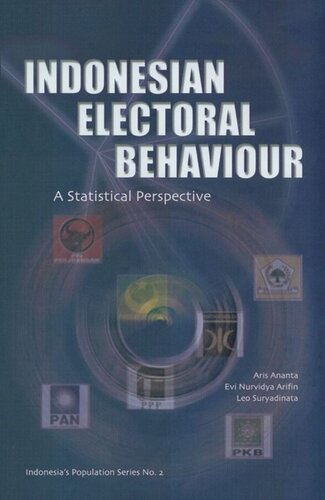

Most ebook files are in PDF format, so you can easily read them using various software such as Foxit Reader or directly on the Google Chrome browser.
Some ebook files are released by publishers in other formats such as .awz, .mobi, .epub, .fb2, etc. You may need to install specific software to read these formats on mobile/PC, such as Calibre.
Please read the tutorial at this link: https://ebookbell.com/faq
We offer FREE conversion to the popular formats you request; however, this may take some time. Therefore, right after payment, please email us, and we will try to provide the service as quickly as possible.
For some exceptional file formats or broken links (if any), please refrain from opening any disputes. Instead, email us first, and we will try to assist within a maximum of 6 hours.
EbookBell Team

4.7
46 reviewsIn Indonesia’s plural society, ethnicity and religion are often considered as two important independent variables to explain electoral behaviour. Many writers have used qualitative methods to relate the performance of political parties in terms of ethnicity and religion. This book questions these assumptions by looking at up-to-date data on the 1999 election and the 2000 population census. The authors, researchers from the Institute of Southeast Asian Studies in Singapore, statistically examine the strength of the impact of religious and ethnic variables relative to those of socio-economic variables (education, per capita income, migration, urbanization, and poverty) on the electoral behaviour of the seven major political parties. Their analysis and findings, together with detailed population profiles in terms of religion, ethnicity and socio-economic conditions at the provincial and district levels, throws light on not only the 1999 election but also the forthcoming 2004 election and beyond. This is the 2nd book in the ISEAS Series, Indonesia's Population.